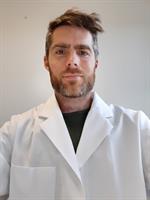 A Next Generation Automated Purification System for the Analysis of Dioxins and Associated POPs
A Next Generation Automated Purification System for the Analysis of Dioxins and Associated POPsNew Organic Monitoring Techniques
Poster Presentation
Prepared by G. ten Dam1, C. van Wakeren1, W. Traag1, H. Fujita2, J. Markesteijn3
1 - DSP-Systems, Darwinstraat 7A, Ede, Gelderland, 6718XR, Netherlands
2 - Miura CO. LTD., 864-1 Hojotsuji, Matsuyama, Ehime, 799-2430, Japan
3 - Nofalab, Jan van Galenstraat 51, Schiedam, Zuid Holland, 3115JG, Netherlands
Contact Information: Guillaume.ten.dam@dspsystems.eu; 0031683627499
ABSTRACT
The detection of polychlorinated dibenzo-p-dioxins, dibenzofurans and dioxin-like polychlorinated biphenyls (non-ortho, mono-ortho substituted CBs) as well as marker PCBs in food, feed and environmental samples have been subject of intensive research. Concentrations in biological samples are very low, in general in the low pg/g range while in environmental samples the concentrations are higher. In order to achieve low limits of quantitation and unambiguous identification, highly sensitive and specific methods are required. In general, methods are set up in several purification steps including multiple types of sorbents and chromatographic approaches to obtain the required sensitivity and selectivity. Such methods generally require substantial manual labour and large amounts of chemicals like hexane, toluene and dichloromethane. Over time advances have been made in terms of automation and as of 2019 the latest generation automated sample preparation system is available on the market in North America. The method uses a minimal amount of solvent, no dichloromethane, and obtains two fractions of around 1.5ml. Fraction 1 contains dioxins and non-ortho PCB and fraction 2 mono-ortho-PCB and non-dioxin-like PCB . Key factors in this method is the use of elevated temperatures of adsorbents to achieve improved interaction between the sample matrix and adsorbents. The column setup of silver nitrate silica, sulfuric acid silica, carbon and alumina not only allows for the efficient purification for dioxins and PCBs, but also for efficient purification of polychlorodiphenyl ethers and polychlorinated naphthalene’s. With this method solvent use is reduced from ~1000ml to less than 100ml per sample for purification while improved purity of the extracts results in reduced maintenance of GC-(HR)MS systems and in general a better quality of analysis. Additionally, human and environmental exposure to solvents is reduced.

